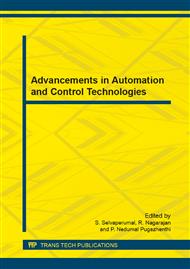p.412
p.418
p.424
p.429
p.437
p.442
p.447
p.453
p.459
Fingerprint Combination of Privacy Preservation is Improved by Delaunay Triangulation Method
Abstract:
Fingerprints are graphical ridge and valley patterns on the tips of human fingers. Owing to their uniqueness and permanence, the use of fingerprints is considered to be one of the most reliable methods of personal verification. Fingerprints are today among the most popularly used biometric modalities in automatic verification systems. At the same time, Protecting the privacy of Fingerprint is an important one, here a novel system propose protecting fingerprint by combining two different fingerprints. In the enrolment stage, fingerprints will be captured from two different fingers. Minutiae positions are extracted from one fingerprint (its the detailed pattern of the fingerprint). The orientation, (it indicates the flow of ridges and valleys) from other fingerprint, and the reference points are calculated from both the two fingerprints. Extracted combined minutiae templates are stored into database. Here A Delaunay Triangulation indexing scheme has been designed for protecting biometric template and non-invertible template are calculated for verifies the authorized person. By using the Delaunay triangulation method fingerprint privacy has to be improved.
Info:
Periodical:
Pages:
437-441
Citation:
Online since:
June 2014
Authors:
Price:
Сopyright:
© 2014 Trans Tech Publications Ltd. All Rights Reserved
Share:
Citation:


